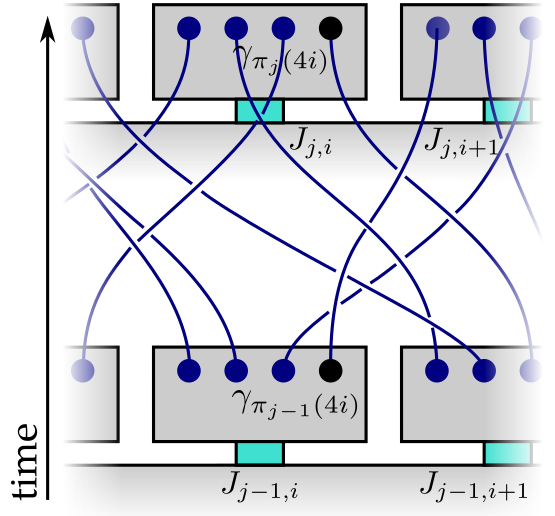Research Highlights
Topological quantum computers to probe gravity-inspired chaos
New research opens a fault-tolerant road towards the fundamental limits of quantum information scrambling.

Our proposed dynamical scheme can be implemented via superconducting islands that host Majorana zero modes, which can be exchanged via braiding.
There is an intriguing shared feature between topological quantum computers and the paradigmatic Sachdev-Ye-Kitaev (SYK) model of the black-hole extreme of scrambling quantum information: both can be built from so-called Majorana fermions.
The SYK model and topological quantum computation, however, seem mutually exclusive because for the former each Majorana fermion has to interact with every other, while the latter requires them to be well-separated for topologically protected operations.
This work reconciles these two paradigms by combining Coulomb interactions and braiding Majorana fermion world-lines (both basic ingredients for topological quantum computing) to generate dynamics capturing the essence of the SYK model.
In addition to generating extreme scrambling, the proposed approach also offers elegant solutions to the outstanding challenge of measuring the scrambling of quantum information. This has been known to be notoriously hard because measuring its physical manifestation — a form of a quantum butterfly effect — turns out to require going backwards in time for a while. This work shows that in Majorana topological computers a particular braid of world-lines emulates exactly that: it makes the system behave as if time was flowing backwards, until this is undone by executing the same braid once again. Using the proposed approach, one can also probe certain fundamental bounds on chaos — the core link between black holes and the SYK model.
Sachdev-Ye-Kitaev Circuits for Braiding and Charging Majorana Zero Modes Jan Behrends and Benjamin Béri, Phys. Rev. Lett. 128, 106805 (2022)